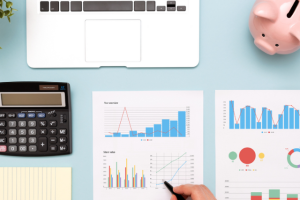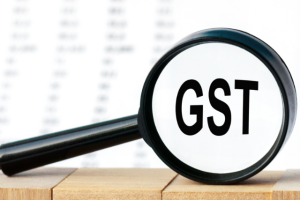Maintaining accurate financial records and implementing effective bookkeeping processes is...
Read MoreCommon accounting and bookkeeping terms explained for business owners

It is often confusing and overwhelming for business owners to get a grip around accounting and bookkeeping terms.
In this article, I will explain the importance of understanding bookkeeping terms and define the most common ones.
Why it is important understanding basic bookkeeping terms
Understanding basic accounting and bookkeeping terms is important for several reasons:
Basic accounting knowledge is essential for effective financial management. It enables business owners to track income and expenses, understand financial reports, and plan for the future. By understanding basic bookkeeping terms, you can make informed decisions about pricing, cost control, and resource allocation.
Basic bookkeeping terms provide the foundation for financial analysis. When you understand the most common bookkeeping terms like revenue, expenses, assets, liabilities, and equity, you can understand, analyse, and improve the financial position of the business.
Accounting information plays a crucial role in decision-making processes. Whether you are a sole trader, small business owner, manager, or a director, understanding basic bookkeeping terms allows you to evaluate the financial implications of different scenarios.
Businesses are required to comply with various accounting standards and regulations. Understanding basic bookkeeping terms ensures that you can comply to these guidelines and maintain accurate financial records. It helps you to fulfill reporting obligations, ensuring legal and regulatory compliance.
By understanding basic accounting terms, you can effectively communicate with your financial providers such as bookkeeper, BAS agent, accountant, and tax agent.
A-Z accounting and bookkeeping terms
Accounting &
Bookkeeping Terms
Explained
Accounts payable
Money owed by a business to a supplier or service provider for goods or services received. Also known as creditors.
Accounts receivable
Money owed to a business by its customers for goods or services provided. Also known as debtors.
Accrual accounting method
Accounting method where Income and expenses are reported at the time the transaction accrued and not when it was paid for.
Asset
Anything of value owned by a business, such as cash, inventory, vehicles or equipment.
Balance sheet
Balance sheet is a financial report that summarise business’s assets, liabilities and equity. In the balance sheet you can view balance of loans taken, balance of bank accounts and other assets value, such as vehicles and equipment.
Assets = Liabilities + Equity
Bank reconciliation
The process of compering bank transaction to transactions recorded in the business’s accounting software
BAS (Business Activity Statement)
A form used by businesses in Australia to report and pay their Goods and Services Tax (GST), Pay As You Go (PAYG) withholding, and other tax obligations.
Bed debt
Amount owed to a business from customers for goods or services provided that cannot be collected.
Capital
Capital in business is the total of assets owned by the business
Chart of accounts (COA)
A list of business accounts to which transactions (income and expenses) are recorded and classified.
Cash flow
The movement of cash into and out of a business over a specific period of time. Which is the revenue and expenses generated by the business over this period.
Cast accounting method
Accounting method where income and expenses are reported at the time they were paid for and not when the transaction accrued
Chart of Accounts
A list of all the accounts used by a business to records its financial transactions. Categorized by asset, liability, equity, income, and expense
Cost of goods sold (COGS)
Expenses related directly to produce a product or service sold by the business
Creditors
Suppliers to whom the business owes money. Also known as accounts payable.
Debtors
Customers who owe money to the business. Also known as accounts receivable.
Depreciation
Decrease in value of a business’s assets over time
Drawings
Money taken out of the business by the owner
Expenses
Purchases made by the business that are required for the business to operate
Equity
The residual interest in the assets of a business after deducting liabilities. It represents the owner’s claim on the company’s assets.
Fixed asset
An asset owned by the business that is intended to be kept for over 12 months, for example: electronics and vehicles.
Forecast
Estimate of the business’s future income and expenses
Gross profit/loss
Gross profit/loss = Revenue / sales – Cost of gods sold
GST (Goods and Services Tax)
Tax of 10% on sales of most goods and services in Australia.
Historical cost
The original cost of an asset purchased by the business
Income
Money received by the business for its goods or services provided
Inventory
List of products a business holds for sale
Invoice
A document produced by a business to request payment listing goods or services provided and their prices
Journal entry
Record of business transaction in an accounting software
Liabilities
Obligations owed by the business, such as debtors, taxes, and loans
Mark up
The difference between the cost to produce or purchase a product the selling price
Net profit
The amount earns by a business after deducting all expenses
Overheads
General cost of running a business that are not directly related to producing a product, such as wages, rent, and insurance
Profit
Revenue of a business after deduction of expense
Profit and loss statement
financial statement listing sales and expenses of a business and show the profitability of the business over a period of time.
Revenue
Income made by a business from sales and other earnings, before any ductions
Sole Trader / self employed
Business structure where the business owner work for himself and is liable for all business debts
Source document
Original document received when buying goods or services such as invoice or receipt
Undeposited account
Monies received/owed by a business which are noy yet banked or spend
If you would like make your bookkeeping processes easier and think your business can benefit from individual advice tailored for your business needs, please don’t hesitate to get in contact and books a 15 minute no obligations introduction call to see how I can best help your business.
Related articles
GST basics for Australian businesses
This article aims to provide you with a fundamental understanding...
Read More
